This post may contain affiliate links. Please read our disclosure policy.
Pan de bono is a magic combination of crumbly cheese, corn flour, a starch, and an egg. It might be the easiest, naturally gluten free bread you'll ever make.
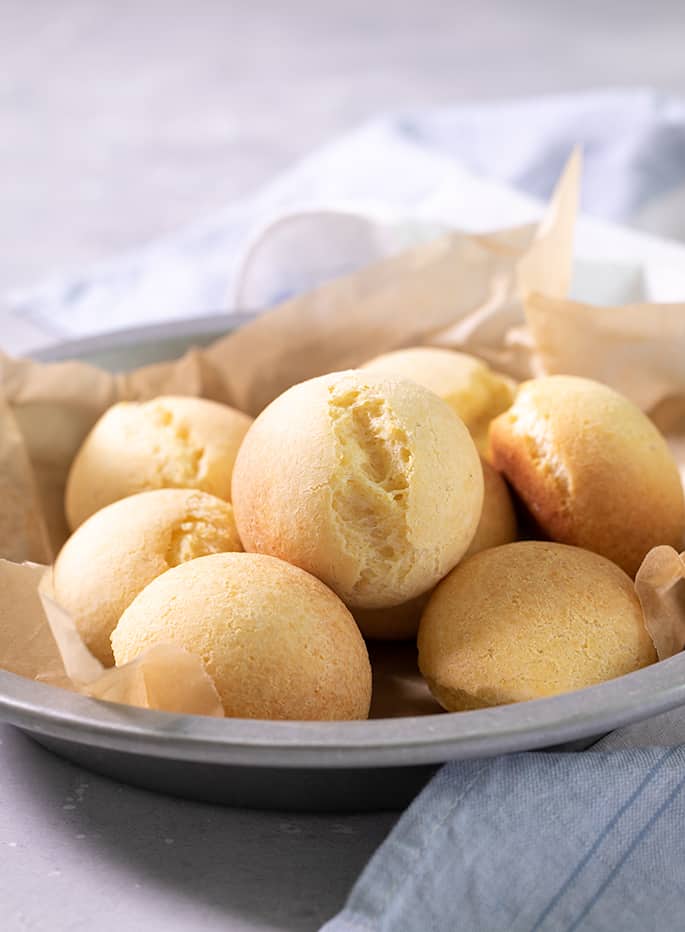
Pan de bono is a delicious, naturally gluten free bread
When I first started baking gluten free, I was desperate for a recipe that was easy and would work. I had tried baking mixes that I special-ordered from who-knows-where, and even those failed.
I was completely overwhelmed by the variety of flours, and tired of baking with stinky garbanzo bean flour. So when I discovered that there were ways to bake simply, like this pan de bono, that were already naturally gluten free, it was like the heavens had opened up. ✨
There are two flours in this recipe, masa harina corn flour, and tapioca starch/flour, but the crux of the recipe is the cheese and the egg. Together, they make a bread that has layers of flavors — from the crusty outside, all the way to the salty sweetness of the cheesy inside.
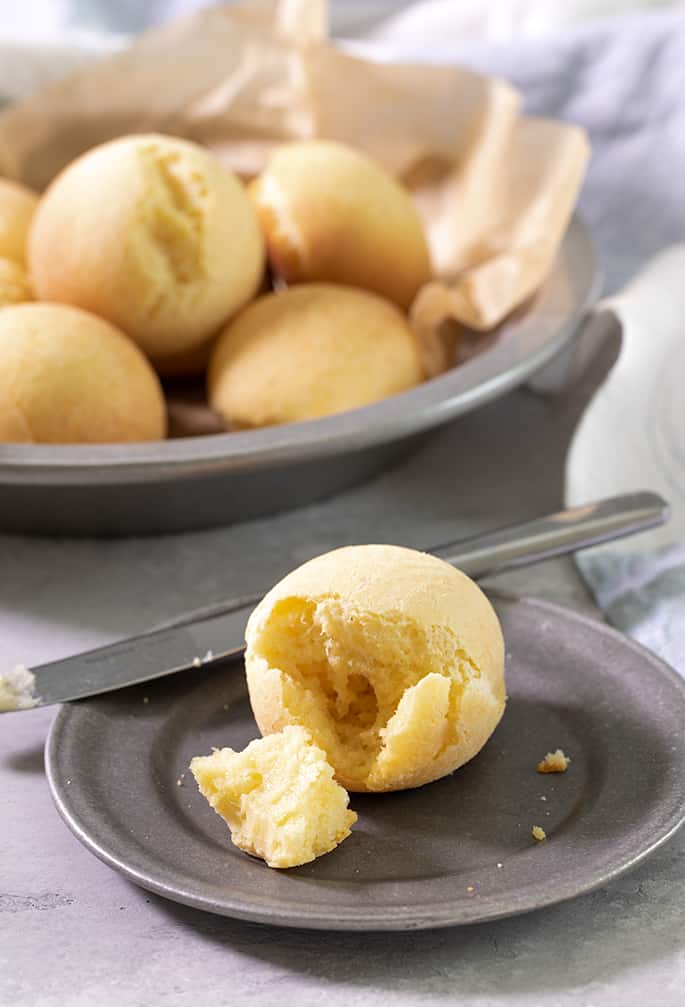
How to make pan de bono dough
The dough for pan de bono is made in a food processor, but you don't need a high-powered or fancy machine. Even a miniature machine will do, but you might have to make the dough in batches.
First, the cheese is made into crumbles by pulsing in the food processor. I've made this recipe with queso fresco cheese, feta cheese, quesito, and even dairy-free cheese (see the Ingredients and Substitutions section below for full details). The saltier the cheese (like feta), the less salt you'll add.
Then, the flours are added and combined quickly and easily with the cheese. With the food processor running, you'll add the egg and process until the dough comes together into a ball. It will happen suddenly, and you'll know it's ready.

Handling and baking pan de bono dough
The dough is super easy to handle, and could certainly be made into other shapes. It will be tacky to the touch, but shouldn't be truly sticky (unless you're using dairy-free cheese). If it is sticky, just cover it with plastic wrap and chill it in the refrigerator for a few minutes.
Bake the rolls for 10 minutes in a hot, 375°F oven. A final brushing with melted butter (vegan butter if you're making the rolls dairy free) helps the rolls brown as they finish baking—and adds some extra, rich flavor.
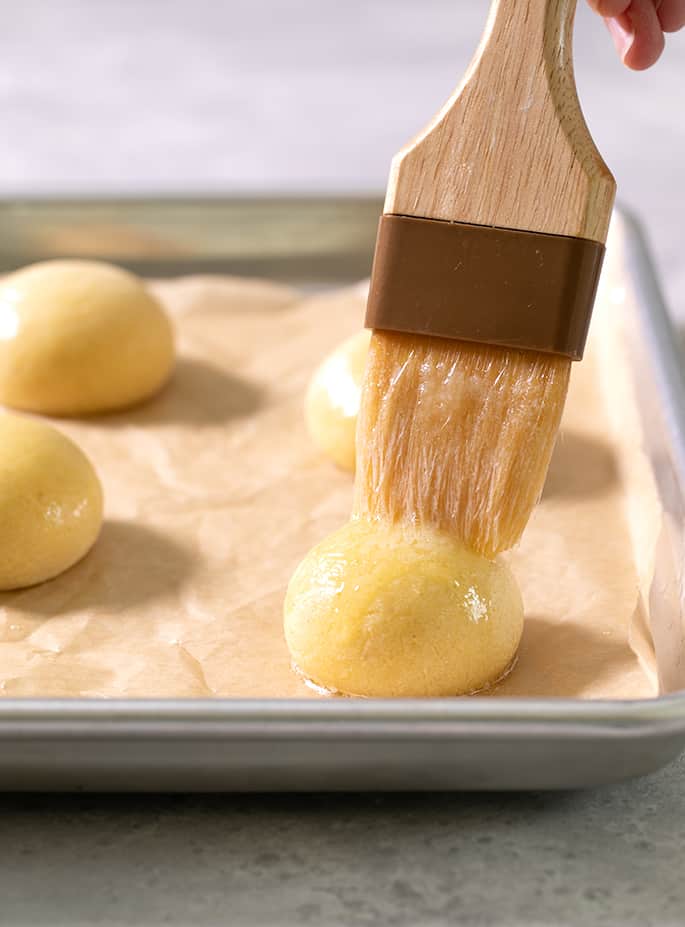
Information about ingredients and possible substitutions
Can you make pan de bono dairy free?
Yes! Pan de bono is naturally gluten free, but naturally dairy-containing. But I'm happy to report that I've successfully made it dairy free by making the following substitutions:
- 8 ounces of Daiya brand dairy-free cheese in place of dairy cheese
- an additional 1/3 cup tapioca starch/flour for a total of 1 cup (120 g)
- an additional egg, for a total of 2 eggs (100 g, weighed out of shell)
- melted nondairy vegan butter in place of melted unsalted butter
- the dough will be stickier, so handle it with wet hands during shaping
The rolls don't brown as well as the original recipe, but they puff perfectly and taste amazing.
Can you make pan de bono without eggs?
You may be able to make egg-free pan de bono. And if you can make it egg free, you can make vegan pan de bono!
There are very few eggs in this recipe (just 1), but since the recipe is so simple that any substitution is risky. It's worth trying with a “chia egg” (1 tablespoon ground chia seeds + 1 tablespoon lukewarm water, mixed and allowed to gel) in place of the single egg.
Can you make corn-free pan de bono?
I don't think so. Masa harina corn flour is a precooked cornmeal (Maseca brand is widely available and is certified gluten free) that's essential to this recipe. There are some recipes where cornmeal can be replaced with ground millet, but I don't believe that would work here. I wish I had better news about making these rolls corn free!
There are two flours in this recipe, masa harina corn flour, and tapioca starch/flour, but the crux of the recipe is the cheese and the egg. Together, they make a bread that has layers of flavors — from the crusty outside, all the way to the salty sweetness of the cheesy inside.
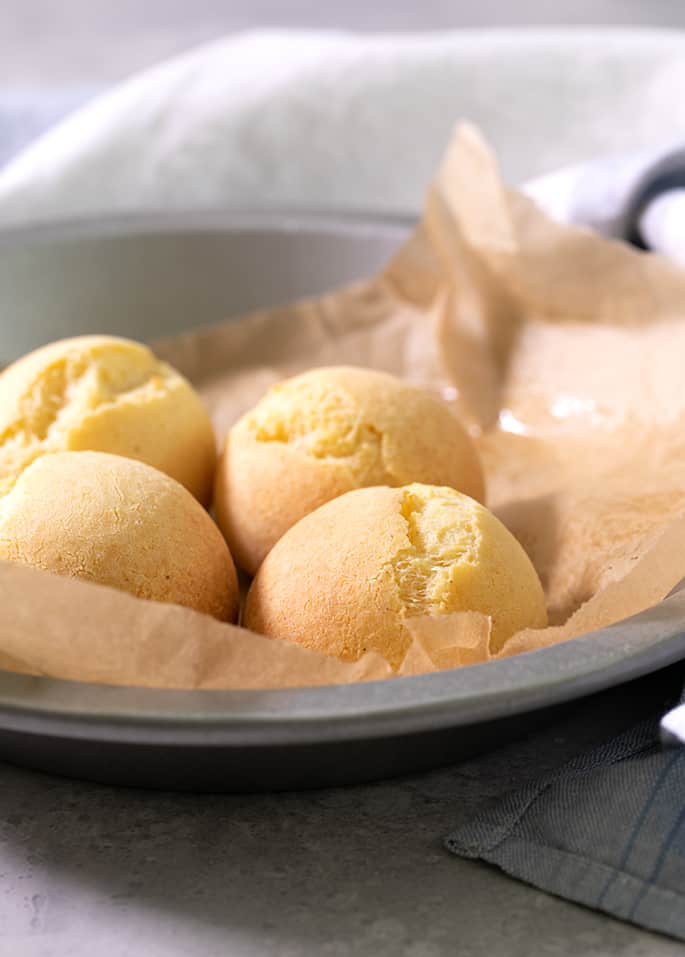
FAQs
Is pan de bono gluten free?
Yes, pan de bono should be naturally gluten free. However, even if the ingredients themselves are technically gluten free, each of the 4 ingredients (masa harina, tapioca starch, eggs, cheese) them must have been carefully sourced as certified gluten free, and prepared in a gluten free environment.
What does pan de bono taste like?
Pan de bono has a crisp, thin shell and a very moist, somewhat sticky crumb inside. It's salty, because it's made with salty cheese, and has the airy texture common in popovers, but not their creaminess.
Is cassava starch the same as tapioca starch?
Yes, tapioca starch, also called tapioca flour, is the starch from the cassava root, also called yuca. Cassava flour, on the other hand, is made by peeling, drying, and grinding the entire cassava root into a fine powder.
Can I make this recipe with “regular” cornmeal?
No, you must use masa harina corn flour to make this recipe. You can't make it using regular corn meal or corn flour. Masa harina corn flour, like we use in this pupusas recipe, is a precooked cornmeal that is treated with limewater, or “slaked.” It behaves very differently than simple ground cornmeal or corn flour, that we use in recipes like cornbread or corn muffins.
Pan de bono | Naturally Gluten Free

Equipment
- Food processor fitted with steel blade
Ingredients
- 8 ounces queso fresco (Mexican), quesito (Colombian), or feta cheese (Greek)
- ⅓ cup (44 g) masa harina corn flour
- ⅔ cup (80 g) tapioca starch/flour
- ¼ teaspoon kosher salt, (omit if your cheese is very salty)
- 1 (50 g (weighed out of shell)) egg, at room temperature
- 2 tablespoons (28 g) unsalted butter, melted
Instructions
- Preheat your oven to 375°F. Line a rimmed baking sheet with parchment paper, and set it aside.
Make the dough.
- In the bowl of a food processor, place the cheese and pulse until all the large pieces are crumbled into a uniform bunch of pebble-sized pieces.
- Add the masa, tapioca starch, and salt, and pulse until well-combined.
- With the food processor on, add the egg and blend until a very smooth, integrated ball forms (about 2 minutes). You might have to stop the food processor halfway through to scrape down the sides of the bowl.
- Remove the dough from the food processor. If it’s sticky to the touch, place it in a medium-sized bowl, cover with plastic wrap, and chill in the refrigerator until firm (about 15 minutes).
Shape the bread.
- Divide the dough into 8 to 10 pieces, roll each into a round between your palms, and place about 1 inch apart on the prepared baking sheet.
Bake the bread.
- Place in the center of the preheated oven, and bake for 10 minutes.
- Remove from the oven, brush the rolls with melted butter and return to the oven to continue baking until puffed, lightly golden brown all over and golden brown underneath and on the edges.
- Allow the rolls to cool briefly before serving.
Video
Notes
Nutrition information is automatically calculated, so should only be used as an approximation.


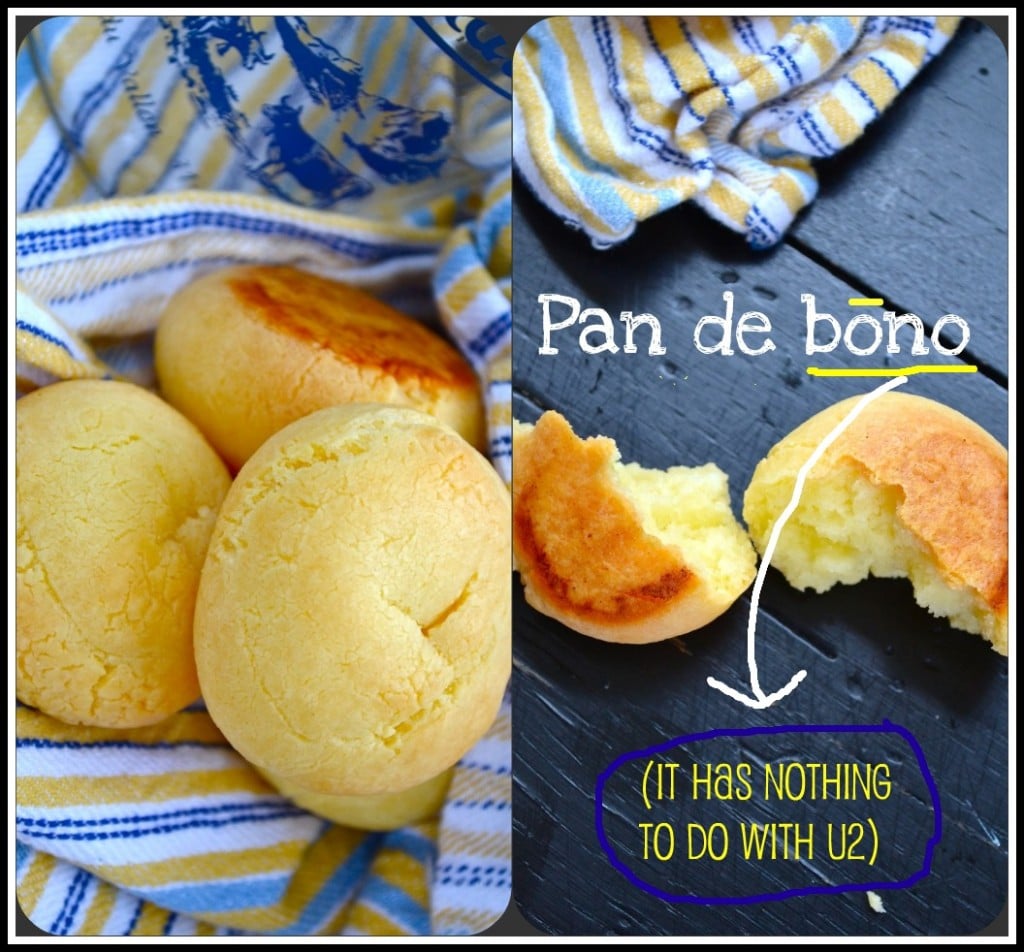
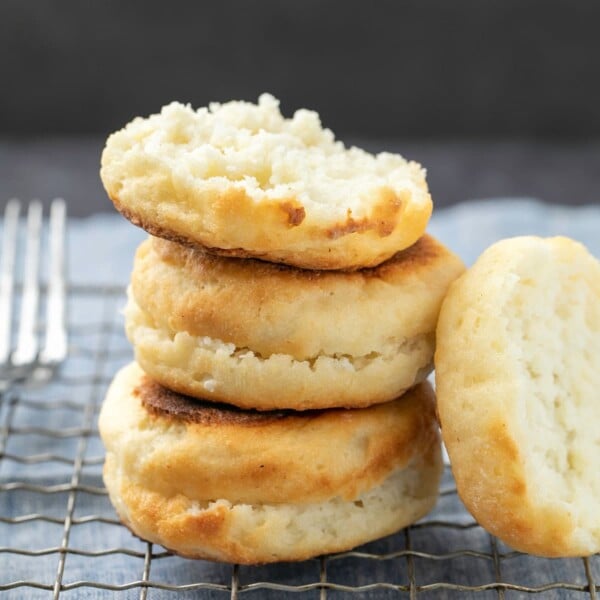

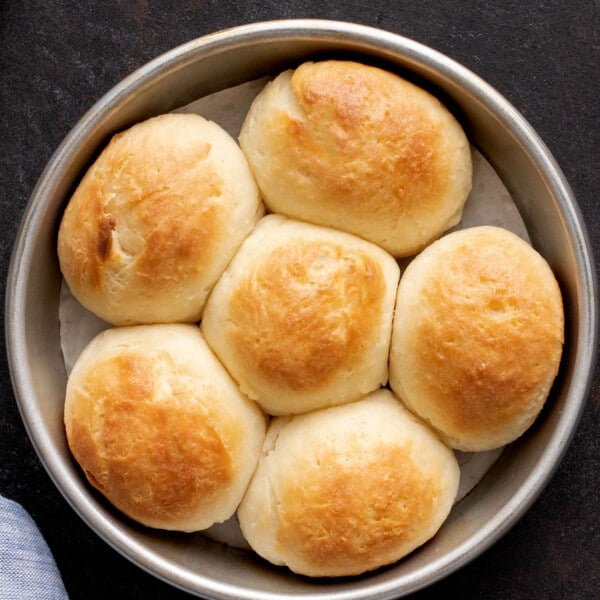
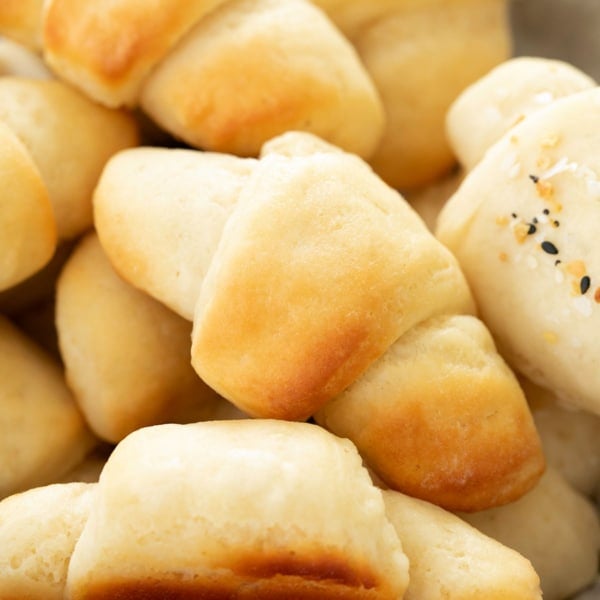









Did not turn out as I had hoped. Mine had the nice “shell” on the outside, but were thick and dense on the inside. They tasted okay, but did nit have the nice puffiness I was hoping to achieve. Wondering what I might have done wrong.
It sounds like you didn’t have enough moisture in your rolls, Deb. That’s usually the result of overmeasuring dry ingredients, which is why I recommend measuring by weight, not volume. Did you make ingredient substitutions? That will also affect such a simple recipe quite a bit. Did you add more flour during shaping? Without knowing more, those are my thoughts. I hope that’s helpful!
I had 2 of these left and today I decided to try making sliders by using them as buns. They make great buns, you guys! I’m going to try a batch that are a little larger around and flatter, this may be a delicious, inexpensive full size bun GF bun.
That’s really good to know, Leanne!
My Colombian friend told me about pan de bono. They said it is common to put guava paste (bocadillo) in the center. Do you happen to know if you can do that with this recipe? Would there be any adjustments required to the recipe? Thank you!
Hi, Fiona, I’m afraid I’m not familiar with that at all, but it sounds delicious. Maybe you can ask your Colombian friend if she has any tips?
My husband is Colombian and he recently brought me to a Colombian bakery in town. I floored when I realized most of the breads were gluten free. I have been gluten free for the past 2 years and have been really missing rolls with dinner. I knew I needed to find a recipe ASAP. These were so easy to make and came out perfect! I doubled the batch and the first one I didn’t make for long enough so they were a bit dense. Second round I kept in oven a bit longer and brushed with butter twice and they were PERFECT! I used Feta because it was all I had at the time but next time I’ll look for a more authentic cheese. Thank you!